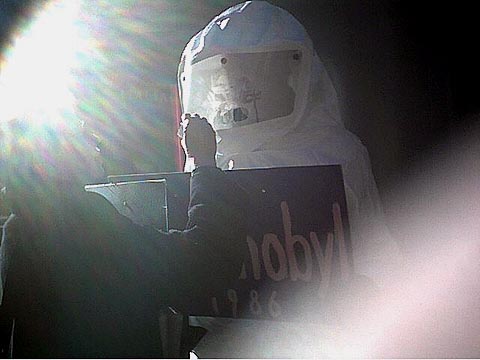Take Action! Stop Fermi 3:
Dedicated to Environmental Quality and Integrity and Service to the Great Lakes Region, a Biodiverse Home of Fresh Water Resources
History of DWM: Don't Waste Michigan (DWM) is a group of concerned citizens and organizations initially formed to prevent Michigan from becoming a nuclear waste dump for the entire region. Citizens throughout the state organized to stop the federal government in conjunction with the nuclear power industry from targeting Michigan to become a nuclear waste dump. DWM organized town meetings and rallies at the state Capitol and convinced legislators that a nuclear dump in Michigan was not acceptable. The campaign was successful, not only in stopping Michigan from becoming a nuclear waste dump, but in also educating the public. DWM continues to be active and to educate the public about nuclear waste, Mixed Oxide Fuel, Palisades Re-licensing and other nuclear issues. DWM frequently joins in coalition with environmental groups and conducts a series of conference under the banner Nuclear Free Great Lakes Action Camps from 1999, 2000, 2001, 2002. DWM has intervened in Federal Court with regards to weapons grade plutonium in the form of Mixed Oxide Fuel (MOX). DWM has intervened in Re-licensing hearings at Palisades and Big Rock. DWM continues to monitor nuclear power related issues in Michigan. Don't Waste Michigan is comprised of an active membership of 40 researchers and educators. Membership frequently swells during campaigns. Membership was in the thousands during the height of the nuclear waste dump struggle.
Don't Waste Michigan is working to:
1. Shut down aging, dangerous nuclear power plants: Palisades, Davis Besse, Fermi. etc.
2. Stop the construction of new nuclear power plants: Fermi 3 etc.
3. Educate the public about the dangers of nuclear power and nuclear waste, its deadly by-product.
4. Stop the burial of nuclear waste in dumps.
What you can do:. Write to your representatives and stress the importance of shutting down aging and unsafe nuclear reactors, securing reactor sites from the threats of terrorism and accidents, tracking down loose nukes here in the US, and of supporting the implementation of safe, renewable energy technologies, i.e. wind, water, solar, and geothermal power...
Reuse
Reduce
Recycle
Live in Harmony with the earth...plant a garden, listen to the sounds of nature, learn about nature and interconnectedness....
Holtec was awarded 1.5 billion in a loan from the government to restart Palisades but must meet safety requirements.
Our objections are many.....
We object to reopening the embrittled, dangerous nuclear power plant, Palisades, and object to building more nuclear plants, including SMRs on the site or in any other area.
We believe that there are better, safe and renewable energy systems available that should be created instead of the cycle of nuclear waste problems.

